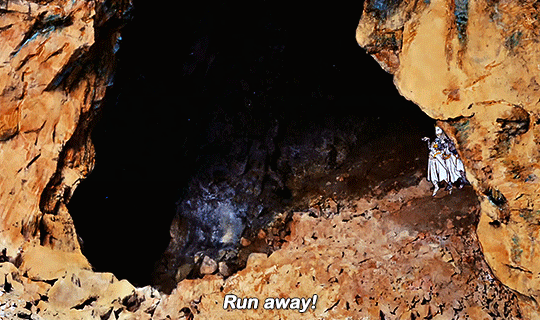#Joseph of arimathea
Explore tagged Tumblr posts
Text

The Deposition
Artist: Pedro Machuca (Spanish, 1490–1550)
Title: The Descent from the Cross
Date: 1547
Medium: Oil on Panel
Collection: Museo del Prado, Madrid, Spain
Description
Christ´s body is taken from the cross by Joseph of Arimathea and Nicodemus. On the ground, Mary Magdalene extends her arms to him while Mary weeps sorrowfully. The depiction of these customary figures is rounded out by the presence of a soldier with renaissance armor and two children, one with a handkerchief tied around his head. These realistic details give Machuca´s scene a special character.
#christian art#biblical scene#deposition#christ's body#joseph of arimathea#nicodemus#mary magdalene#soldier#armour#children#new testament#oil on panel#16th century painting#pedro machuca#ladder#men#women#cloudy sky#christianity#christian faith#holy bible
28 notes
·
View notes
Text

Head of St. Joseph of Arimathea in Prayer (after Rogier van der Weyden), tentatively attributed to Albert Bouts, 15th century
#art#art history#Albert Bouts#Rogier van der Weyden#religious art#Christian art#Christianity#imaginary portrait#Joseph of Arimathea#Northern Renaissance#Flemish Renaissance#Early Netherlandish#Early Netherlandish art#Flemish art#15th century art#oil on panel#National Trust
87 notes
·
View notes
Text
5th January
Twelfth Night/ Old Christmas Eve

1986 Christmas stamp. Source: The Garden Trust website
Joseph of Arimathea, Jesus’ uncle, visited Britain according to Christian folklore and while here, planted his staff in the ground at Glastonbury and it immediately sprouted into a thorn tree. The Glastonbury Thorn was thereafter considered holy and it proved its divine provenance by blooming each Christmas Day. When the calendar changed and the former Christmas Day moved to 5th January which, confusingly, became known as Old Christmas Eve, the Thorn sadly did not accommodate its blooming habits to the new dating system. The Puritans had considered the Joseph legend stuff and nonsense and during the Commonwealth the Thorn was cut down. Cuttings survived however and were replanted, with the Thorn once again coming into flower in both midwinter and early spring to this day. To add some veracity to the legend, the Thorn is estimated by botanists to have its origins in the Middle East.
Twelfth Night, the night before the last day of the Christmas season was often celebrated by a final bout of wassailing. To wassail - the word is derived from the Anglo-Saxon toast waes hael , or good health - is to pass round a bowl of festive ale or mead punch and to drink to the season. Wassailing was also carried out by groups of beggars on a trip called the Visiting Wassail, who throughout Christmas would go door to door seeking food and wassail drink. Tonight was the last opportunity the alms seekers had to importune their neighbours in this way before being told to go away and come back next year.
#Joseph of arimathea#glastonbury#Glastonbury thorn#twelfth night#old Christmas Eve#wassailing#english folklore#Christian legend#visiting wassail
10 notes
·
View notes
Text


(From Visions of History: Robert de Boron and the English Arthurian Chroniclers by Edward Donald Kennedy)
The way I interpret the French Tradition is that it "started" with Robert de Boron. In a way, Robert de Boron is like the "Second Father of Arthuriana". Robert de Boron didn't so much alter King Arthur's story as he instead gave it a new context.
Despite Chretien de Troyes and Robert Wace introducing the Round Table, the Holy Grail and Sir Lancelot, it was Robert de Boron who truly established the "Christian Chivalric Universe" - by writing about the history of the grail and the introduction of Joseph of Arimathea as a patriarch, Robert de Boron gave the (Literary) Chivalric genre a Mythic Past and a continuity of sorts. It fits in the Christian worldview of history as part of a giant plan - and story - of God's for Mankind's salvation.
It fully establishes the Christian origin and heritage of (Literary-)Chivalry-as-an-institute by not only having Joseph bring Christianity to Britain, where the future fantastical setting of Arthur and his warriors was to be established, but also having him serve as the ancestor to multiple Arthurian characters such Percival, Tristan, Lancelot, King Lot, his son Gawain, and Arthur himself (fulfilling the aristocratic need for genealogical fantasy).
This essentially pushes away, and negates the symbolic consequences of, the original narrative set forth by Geoffrey of Monmouth - the almost kind-of secular and worldly portrayal of Arthurian History.
For all intents and purposes, Joseph of Arimathea replaces Brutus in importance for the Era of Camelot. This is why (in Vulgate cycle, at least) Joseph is said to be a knight.

Nowhere is that felt more than in Robert's introduction of one of the most iconic pieces of Arthuriana: The Sword in the Stone.
The Sword of the Stone, an item not mentioned at all in Historia Regum Britannia, and its attendant story arc of Arthur's hidden upbringing by Antor/Ector, essentially functions as a second origin story for King Arthur without having to negate or omit Geoffrey's older story of Arthur being born through a thoroughly un-Christian manner.
Whatever or whoever Arthur was before pulling the sword doesn't particularly matter, the sword in the stone effectively grants the same Divine privilege to rule as if he was conceived and raised as a normal royal.
AND
Arthur's ignorance of his heritage affords him synergy with his knights, many of whom are often of the "Fair Unknown" archetype, including Lancelot, Gawain, and of course, Percival.
#robert de boron#chretien de troyes#robert wace#brut#joseph of arimathea#robert de boron grail cycle#french arthuriana#holy grail mythos#the sword in the stone#my thoughts#crhistianity
3 notes
·
View notes
Text
weird question
I'm not sure how a first-century Jewish person would have thought about this, but I'm curious. After the resurrection, when Joseph of Arimathea died, why wasn't he buried in the tomb?
2 notes
·
View notes
Text

THE DESCRIPTION OF SAINTS JOSEPH OF ARIMATHEA AND NICODEMUS Feast Day: August 31
In the latest edition of the Roman Martyrology, the Church has coupled the feast of Joseph of Arimathea and Nicodemus, the two holy men who took the Body of Jesus down from the Cross, wrapped it in cloths, and placed it in the tomb.
Joseph is unknown to us except for the information that is recorded when he is mentioned in all four Gospels. He was a disciple of Christ from Arimathea, a place probably to the northwest of Jerusalem. He was a well-to-do, devout member of the Sanhedrin, the ruling body of Israel, who was awaiting the Kingdom of God that had been foretold by the Prophets. However, out of fear, he remained a secret disciple. Joseph did not take part in the resolution of the Sanhedrin to put Jesus to death. Then after the crucifixion of our Lord (at which he was present), Joseph summoned up the courage to go to Pilate and ask for the Body of the Savior.
With the aid of Nicodemus, another secret disciple of Christ, Joseph took down the Body, wrapped it in cloths, and placed it in his newly hewn grave (in which no one had been placed) in a garden near Calvary. This fulfilled the words of Isaiah (53:9) that the tomb of the Messiah would be among the rich. Legends that cannot be authenticated have made Joseph a heroic figure in the spread of the faith to France and England.
Nicodemus is known to us through the Gospel of John. He was a Pharisee and member of the Sanhedrin who was convinced by the miracles of Christ that He was sent from God. In a nighttime interview, Christ told this wealthy and learned inquirer that faith and baptism were necessary for eternal life.
Nicodemus did not then understand but was deeply touched, although he did not yet have the courage to stand up for the Lord. Later, at the Feast of Tabernacles, when the Jewish authorities were planning to kill Jesus, Nicodemus spoke up—though timidly—in the Sanhedrin, reminding them that the Law did not condemn a man until he had been heard in his own defense. After Christ's death, Nicodemus came boldly with about 100 pounds weight of merrh and aloes and assisted at Christ's burial.
Nothing else is known with certainty about Nicodemus, but legends about in the Apocryphal works, The Acts of Pilate and The Gospel of Nicodemus.
Source: divine-redeemer-sisters.org
2 notes
·
View notes
Text
The Black Beast of Aaaaargghh







MONTY PYTHON AND THE HOLY GRAIL 1975 | dirs. Terry Gilliam, Terry Jones
2K notes
·
View notes
Text
Just an Ordinary Average Joe
After watching those brilliant, toned, driven Olympic athletes and their feats, it can certainly intimidate those of us without those well-trained bodies — physically AND mentally! We are just ordinary, average Joes. How could we ever excel and become so remarkable and outstanding in our “sport” or our “job” or our “family and relationships”? “Vive la différence!” No need to compare ourselves…
#above and beyond#all is well#average joe#be kind#Bible people#blog#breathe#christian#determination#facebook#faith#focus#Holy Spirit#I can do all things#inspiration#Joseph#Joseph father of Jesus#Joseph of Arimathea#ordinary joe#ordinary life#philippians 4:13#weight of the world
0 notes
Text
John 19:38–42
38 Μετὰ δὲ ταῦτα ἠρώτησεν τὸν Πιλᾶτον Ἰωσὴφ [ὁ] ἀπὸ Ἁριμαθαίας, ὢν μαθητὴς τοῦ Ἰησοῦ κεκρυμμένος δὲ διὰ τὸν φόβον τῶν Ἰουδαίων, ἵνα ἄρῃ τὸ σῶμα τοῦ Ἰησοῦ· καὶ ἐπέτρεψεν ὁ Πιλᾶτος. ἦλθεν οὖν καὶ ἦρεν τὸ σῶμα αὐτοῦ. 39 ἦλθεν δὲ καὶ Νικόδημος, ὁ ἐλθὼν πρὸς αὐτὸν νυκτὸς τὸ πρῶτον, φέρων μίγμα σμύρνης καὶ ἀλόης ὡς λίτρας ἑκατόν. 40 ἔλαβον οὖν τὸ σῶμα τοῦ Ἰησοῦ καὶ ἔδησαν αὐτὸ ὀθονίοις μετὰ τῶν ἀρωμάτων, καθὼς ἔθος ἐστὶν τοῖς Ἰουδαίοις ἐνταφιάζειν. 41 ἦν δὲ ἐν τῷ τόπῳ ὅπου ἐσταυρώθη κῆπος, καὶ ἐν τῷ κήπῳ μνημεῖον καινὸν ἐν ᾧ οὐδέπω οὐδεὶς ἦν τεθειμένος�� 42 ἐκεῖ οὖν διὰ τὴν παρασκευὴν τῶν Ἰουδαίων, ὅτι ἐγγὺς ἦν τὸ μνημεῖον, ἔθηκαν τὸν Ἰησοῦν.
My translation:
38 And after these things Joseph from Arimathea, being an apprentice of Yeshua, but having been concealed on account of fear of the Judeans, asked Pilate that he might take away the body of Yeshua; and Pilate permitted it. He went, therefore, and took away his body. 39 And Nicodemus also came, who came to him by night at the first, bearing a mixture of myrrh and aloes, about one hundred litra. 40 They took, therefore, the body of Yeshua and bound it in cloths with the aromatics, just as is the custom for the Judeans to bury. 41 And in the place where he was crucified there was an orchard, and in the orchard a new tomb in which no one was yet having been put; 42 there, therefore, on account of the preparation day of the Judeans, for the tomb was near, they put Yeshua.
Notes:
19:38
δὲ is transitional (generally left untranslated).
The temporal prepositional phrase μετὰ ταῦτα, referring to the death of Jesus, modifies the aorist ἠρώτησεν (from ἐρωτάω), whose direct object is τὸν Πιλᾶτον and subject is Ἰωσὴφ. The article [ὁ] looks like a scribal correction, to place the prepositional phrase ἀπὸ Ἁριμαθαίας in the attributive position with Ἰωσὴφ.
The present participle ὢν (from εἰμί), being anarthrous, is adverbial with ἐρωτάω above, perhaps denoting cause (“because he was a disciple ... he asked”). μαθητὴς is a predicate nominative, modified by genitive of relationship τοῦ Ἰησοῦ.
δὲ is adversative (“but”).
The perfect passive participle κεκρυμμένος (from κρύπτω “I hide, conceal, cover”; see note on 8:59) is attributive with an implied μαθητὴς; the perfect-tense is stative (lit. “but a hidden disciple”); NASB, NRSV: “a secret one”; NIV, NET, HCSB: “secretly”. The participle is modified by the causal prepositional phrase διὰ τὸν φόβον. τῶν Ἰουδαίων is an objective genitive (lit. “on account of fear of the Jews”; NIV: “because he feared the Jewish leaders”).
ἵνα + subjunctive, equivalent to an infinitive, indicates purpose after ἐρωτάω above (“asked Pilate that he might take” = “asked Pilate for permission to take”). Joseph is the unexpressed subject of the aorist subjunctive ἄρῃ (from αἴρω) and the direct object is τὸ σῶμα. τοῦ Ἰησοῦ is a possessive genitive.
ἐπιτρέπω (18x) is, “I allow, permit” (BDAG), from ἡ ἐπιτροπή (1x) “permission”. The subject of the aorist ἐπέτρεψεν is ὁ Πιλᾶτος (“Pilate permitted it”; NRSV, NET, HCSB; “Pilate gave him permission”).
οὖν is inferential (“so”, most translations).
Joseph is the unexpressed subject of the 2nd aorists ἦλθεν (from ἔρχομαι) and ἦρεν (from αἴρω). τὸ σῶμα is the direct object of αἴρω; αὐτοῦ, referring to Jesus, is a possessive genitive.
19:39
δὲ is transitional (generally left untranslated).
The subject of the 2nd aorist ἦλθεν (from ἔρχομαι) is Νικόδημος. καὶ is adjunctive (“also”).
The articular present participle ὁ ἐλθὼν (from ἔρχομαι) is substantival and appositional to Νικόδημος above. The aorist participle denotes action prior to the aorist main verb ἦλθεν, and thus is properly rendered in English by a pluperfect (“who had come”). The participle is modified by the spatial prepositional phrase πρὸς αὐτὸν, referring to Jesus. νυκτὸς is a genitive of time (see note on 3:2) modifying the participle. For τὸ πρῶτον, see note on 10:40 (NRSV: “at first”; NIV: “earlier”; NET, HCSB: “previously”).
The hapax legomenon τό μίγμα is, “mixture, compound [of an ointment]” (BDAG).
ἡ σμύρνα (2x) is, “myrrh”, ‘the resinous gum of the bush balsamodendron myrrha’ (BDAG).
The hapax legomenon ἡ ἀλόη is, “aloes”, ‘the strong aromatic, quick-drying juice of the aloe vera or aloe succotrina’ (BDAG). The direct object of the present participle φέρων (from φέρω) is μίγμα; σμύρνης καὶ ἀλόης are genitives of content, or perhaps objective genitives. The participle denotes manner with ἦλθεν above.
The indeclinable numeral ἑκατόν is, “one hundred”. ὡς before a number means, “about”. ἑκατόν is attributive with λίτρας (“a [Roman] pound”; see note on 12:3) which is accusative to match μίγμα above; Leedy diagrams λίτρας as the predicate nominative of an implied neuter participle ὄν (from εἰμί): “a mixture ..., being about one hundred litra”. One Roman pound is equivalent to 12 ounces or 3/4 American pounds (NIV, NET: “about seventy-five pounds”).
19:40
οὖν is transitional (“Then”, NET, HCSB).
Joseph and Nicodemus are the unexpressed subject of the 2nd aorist ἔλαβον (from λαμβάνω) and of the aorist ἔδησαν (from δέω “I bind”). τὸ σῶμα, modified by possessive genitive τοῦ Ἰησοῦ, is the direct object of λαμβάνω. αὐτὸ, referring to τὸ σῶμα, is the direct object of δέω.
τό ὀθόνιον (5x, 4 of which in this passage) is, “[linen] cloth, cloth wrapping” (BDAG), the diminutive form of ἡ ὀθόνη (2x) “linen sheet”. The dative ὀθονίοις is instrumental with δέω above.
τό ἄρωμα is, “fragrant spice/salve/oil/perfume” (BDAG). The associative prepositional phrase μετὰ τῶν ἀρωμάτων modifies δέω above.
The comparative adverb καθὼς connects the following clause with δέω above.
τό ἔθος (12x) is, “habit, custom”, a second-declension neuter noun.
ἐνταφιάζω (2x) is, “I bury, prepare for burial” (BDAG), from ἐνταφιασμός (2x) “preparation for burial” (see 12:7). The present infinitive ἐνταφιάζειν is epexegetical of ἔθος, which is the subject of the present ἐστὶν (from εἰμί). τοῖς Ἰουδαίοις is a dative of reference/respect.
19:41
δὲ introduces background information (“Now”, NASB, NRSV, NET).
The subject of the imperfect ἦν (from εἱμί) is κῆπος (“garden”; see note on 18:1). The verb is modified by the locative prepositional phrase ἐν τῷ τόπῳ. The clause introduced by the spatial particle ὅπου is epexegetical of τόπῳ. Jesus is the unexpressed subject of the aorist passive ἐσταυρώθη (from σταυρόω “I crucify”): “in the place where he was crucified there was a garden”.
The locative prepositional phrase ἐν τῷ κήπῳ (“in the garden”; see note on 18:1) modifies an implied ἦν, whose subject is μνημεῖον (“tomb”, 11x in this passage); the adjective καινὸν is attributive.
The antecedent of the relative pronoun ᾧ is μνημεῖον. The locative prepositional phrase ἐν ᾧ modifies the imperfect ἦν (from εἰμί), whose subject is the substantival οὐδεὶς. The adverb οὐδέπω (“not yet”; see note on 7:39) modifies ἦν. ἦν forms a periphrastic construction with the perfect passive participle τεθειμένος (from τίθημι), equivalent to a pluperfect (“in which no one had yet been laid”, NASB).
19:42
οὖν is inferential (“Therefore”, NASB; “And so”, NRSV, NET).
The locative adverb ἐκεῖ modifies the main verb ἔθηκαν below.
The causal prepositional phrase διὰ τὴν παρασκευὴν (“day of preparation”, “Friday”; see note on v. 14) modifies the main verb ἔθηκαν below. τῶν Ἰουδαίων is a descriptive genitive (“Jewish day of preparation”).
The clause introduced by the causal ὅτι modifies the main verb ἔθηκαν below. The adjective ἐγγὺς is predicate with the imperfect ἦν (from εἰμί) whose subject is τὸ μνημεῖον (“the tomb”).
Joseph and Nicodemus are the unexpressed subject of the aorist ἔθηκαν (from τίθημι) and τὸν Ἰησοῦν is the direct object.
0 notes
Text

Christ Carried to the Tomb
Artist: Sisto Badalocchio (Italian, 1585 – c. 1619-1647)
Style: Baroque
Date: c. 1607
Medium: Oil on canvas
Collection: Dulwich Picture Gallery, London, England
Christ Carried to the Tomb
This dramatically lit painting shows the burial of Christ following his crucifixion, a story described in the New Testament of the Bible, according to the Christian tradition. In a dramatic, diagonal movement which sweeps down through the painting, Christ’s body is carried into the enveloping darkness of the tomb by Nicodemus, Joseph of Arimathea, a torch bearer and John the Evangelist (right to left). The weeping holy women, glimpsed outside beyond the mouth of the tomb, occupy a space deep within the painting. By contrast, John the Evangelist seems to step right out of the painting into the viewer’s space. The eye is drawn to Christ’s limp hand in the centre of the painting, still bearing the wound made by the nail which fixed him to the cross. The mourning woman in the foreground, likely Mary Magdalene, meditates upon this hand, inviting the viewer to do the same in the empty space that has been left for them.
#artwork#oil on canvas#christianity#christian art#christ's crucifixion#entombment#jesus' crucified#holy bible#christ our savior#night#torch#burial of christ#darkness#nicodemus#joseph of arimathea#john the evangelist#women#mourning#painting#sisto badalocchio#italian painter#baroque style#bolognese school
12 notes
·
View notes
Text
Good Friday (John 18:1-19:42)
He then lowered his head to his chest and, with his last breath, gave up his spirit.
The Death of Christ, by Melanie Twelves Today’s Gospel lesson encompasses the full two chapters of events surrounding the arrest, torture, crucifixion, and death of Christ. Jesus died not only for white European heritage persons (like me) but for people of all races and ethnicities everywhere. And so, it is good and appropriate that the following comes from the First Nations Version: An…

View On WordPress
#apostle john#apostle peter#christ&039;s crucifixion#christ&039;s passion#christianity#cross of christ#death of christ#good friday#gospel of john#holy week#jesus christ#john 18#john 19#joseph of arimathea#judas iscariot#king jesus#lent#nicodemus#pontius pilate
0 notes
Text
Live Stream Sunday School - December 3, 2023
John 19:31-42 #sunday #sundayschool #livestream #John #Jesus #Joseph #Nicodemus #Arimathea #Pilate #Body #pierce #blood #water #leg #unbroken #akron #akronohio #thealliance
youtube
View On WordPress
#blood#body#cross#disciple#Jesus#John#John 19#Joseph of Arimathea#legs#Nicodemus#pierce#Pilate#Pontius Pilate#secret#unbroken#water#Youtube
0 notes
Text
Saints Nicodemus and Joseph of Arimathea: Witnesses to Spiritual Renewal and the Dignity of Life
In the tapestry of Christian history, certain individuals shine as beacons of faith and devotion. Among these luminaries are Saints Nicodemus and Joseph of Arimathea, both figures who play pivotal roles in the Gospel narratives surrounding the life, death, and teachings of Jesus Christ. Their stories reflect profound spiritual truths and lessons that continue to inspire believers across the…

View On WordPress
#Baptism#burial#burial of Jesus#Catholic life#Catholic saint#Catholic saints#Catholic spiritual life#dignity of life#Gospel#Jesus#Joseph of Arimathea#nicodemus#Saints
0 notes
Text
Me again: OMG… they mean THAT Joseph? Oh you poor sweet baby…
For as much as I love Marvel comics, I’ve never felt like the stereotypical comic book movie fan when watching MCU movies. There’s no getting excited over seeing any blorbos show up and speculating over what that might mean for future installments.
But I’ll be darned if that isn’t exactly what I do with The Chosen, even though I know exactly what will happen.
[character who was the recipient of one of Jesus’ miracles and isn’t even named in Scripture]: appears
Me: OMIGOSH IT’S THE CENTURION WHOM JESUS HEALS THE SERVANT OF IN MATTHEW 8! I LOVE THAT GUY!
328 notes
·
View notes
Text
#christianity#Holy Grail#Missing years of Jesus#Joseph of Arimathea#King Arthur#Glastonbury#Holy Thorn#Pelagius#Saint Patrick#Saint Columba#Saint Brendan#Saint Brigid#King Ina#12 Hides of Glastonbury#reincarnation#John the Baptist reincarnation of Elijah?
0 notes
Text
Apparently I was on the Discovery Channel about 6 months ago (?) Or on TV and none of the people who hired us told us anything about it being aired! Lmao.
We filmed this years ago, I assumed they’d never drop it. 11k views on YouTube, no credits, and no emailing my partner that it was going to be aired or anything despite the work we put in as actors! Awkward much~
They also think we are apparently 3 hours east of London and into the sea. Babe we were “looking for the Holy Grail”, not Atlantis.
Check it out here anyway. I’m one of the men wandering around and digging in that silly hole. 😂 I’m glad I wasn’t the face though of something which didn’t even have the professionalism for getting basic geography correct, nor bothering to even try a quick Google search for the location they filmed their own episode in. How embarrassing. So much for knowing anything much about what they were doing.
Gawd. This Holy Grail certainly won’t ever be found in the hands of these people. 😂
1 note
·
View note